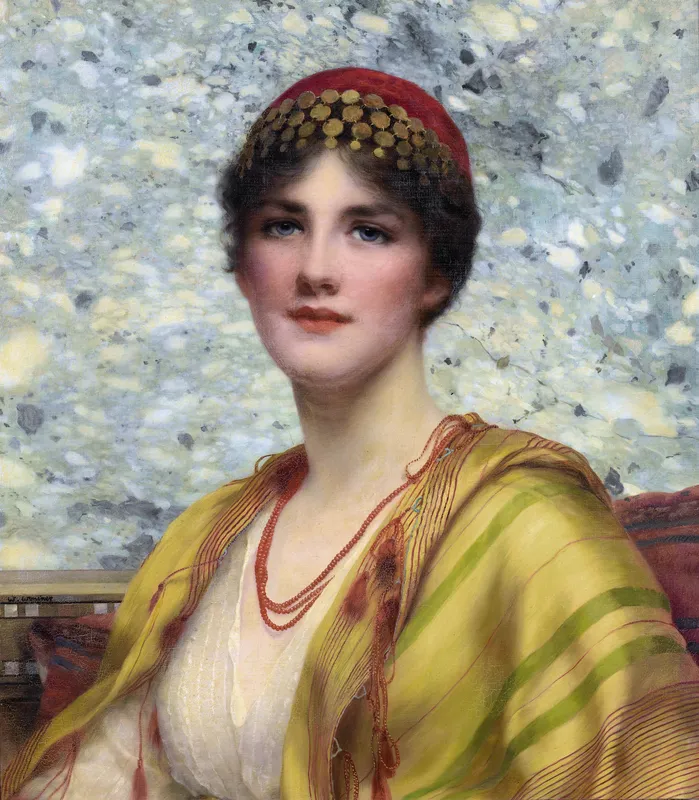-

A Beauty In Eastern Costume
A woman draped in rich Eastern fabrics gazes past the viewer, her delicate features framed by intricate jewelry. The folds of her gown catch the light, hinting at movement frozen in time. There’s a quiet intensity in her distant expression, as if lost in thought just beyond the canvas.
-

Leonora
A woman gazes from the canvas, her Victorian dress rich with detail, the soft light catching the folds of fabric. There’s a quiet intensity in her expression—neither smiling nor solemn, but something in between, as if she’s just paused mid-thought. The portrait lingers, unreadable.